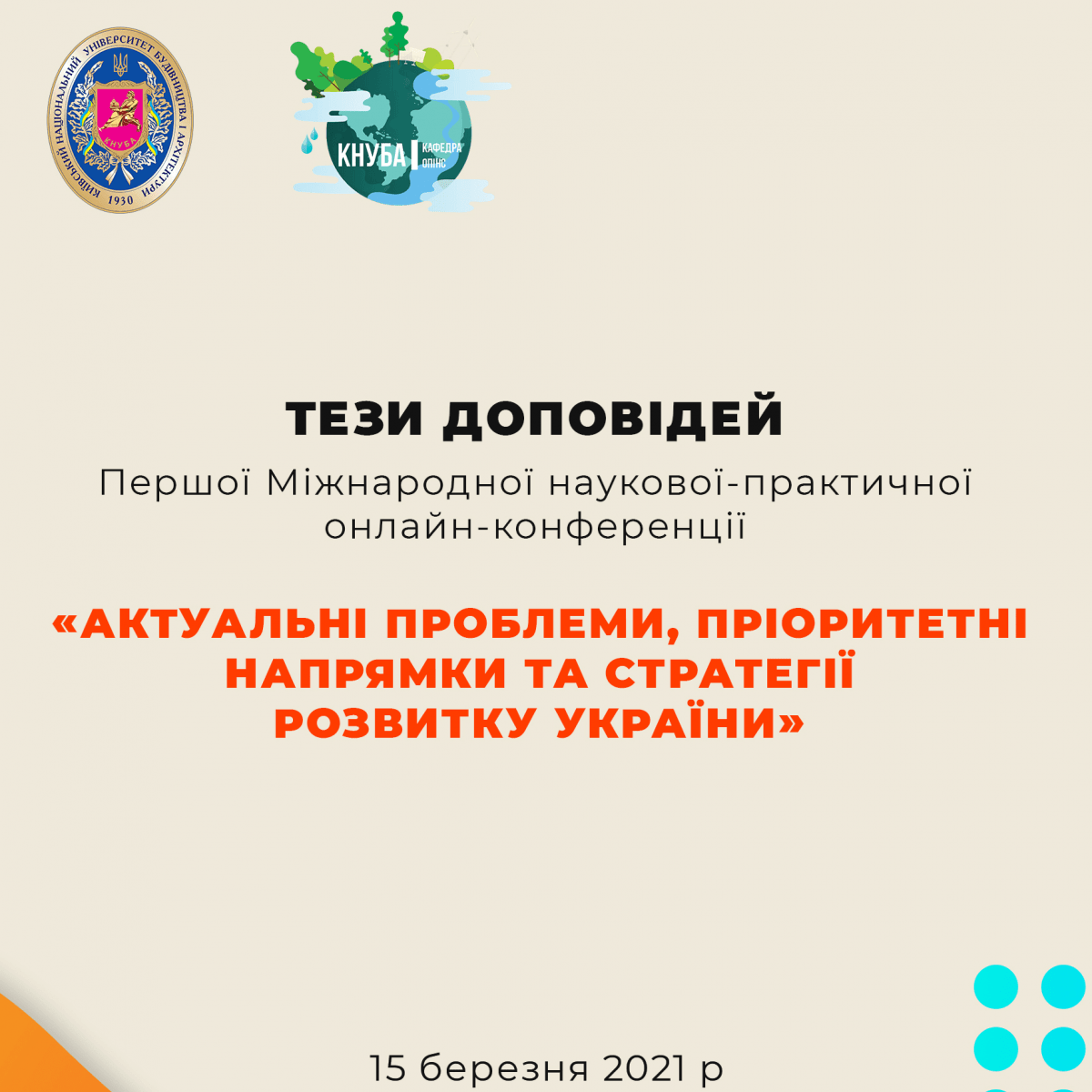Recent Posts
- Ukraine recovery should be based on development of territorial communities, innovations, involvement of professional domestic community – results of ESUR forum 29.06.2023
- Ukraine repatriates five more seriously wounded Russian POWs 10.04.2023
- Rada intends to include history of Ukraine, foreign language in final certification for general secondary education 10.04.2023
- Rada terminates protocol on joint anti-terrorist measures in CIS territories for Ukraine 10.04.2023
- 100 Ukrainians, incl defenders of Mariupol, returned according to swap procedure – Yermak 10.04.2023
Компетенції безпеки життєдіяльності

Єрешко Анастасія
(Черкаси, Україна)
ОСВІТА
(Освіта у напрямку безпеки життєдіяльності,
охорони праці і цивільного захисту)
КОМПЕТЕНЦІЇ БЕЗПЕКИ ЖИТТЄДІЯЛЬНОСТІ
The tasks of the government to preserve the health and lives of citizens of Ukraine are largely solved by forming the competencies of life safety of future professionals. This is especially true for the civil protection service employees, since these competencies act both as a professional characteristic and as personal qualities.
Modern man is surrounded by many technical devices, however, the rate of emergence of such means is much higher than the speed of registration of the negative impact of these technologies. The situation is also aggravated by human intrusion into the processes of microworld, which leads to dangerous consequences that will negatively affected the next generations. That is why it is important to teach the students to anticipate the long-term negative consequences of the results of their own professional activities [1].
Modern training of civil protection service specialists must meet the requirements of the national education system and international standards, which provide for the readiness of graduates to safe professional activities. A new direction in pedagogy has emerged – safety pedagogy, aimed at training people in safe behavior in the environment (natural, man-made and social).
The ideas, methods and approaches developed in safety pedagogy cover all parts of the unified system of continuing education and contribute to the constant improvement of the general culture of those studying in the field of life safety to reduce the negative impact of the human factor on the environment. The subject of life safety pedagogy is the pedagogical process on the basics of life safety, and, above all, its content and psychological and pedagogical technologies for shaping the personality of a citizen who is responsible for personal safety, security of society and the state in all spheres of life. These tasks are solved step by step and consistently by a single continuous system of education: secondary school, secondary special educational institutions and institutions of higher education [2].
Given the importance of this topic, the course on the basics of life safety is considered one of the most important. It is designed to provide an understanding of the risks and threats of the modern world, to develop the ability to act in extreme situations of natural and man-made disasters, terrorist acts, to give an understanding of the role of the state and current legislation in ensuring national security and protection of the population. An important place is given to the formation of ecological thinking, the impact of public morality and socio-economic processes on the environment, gaining experience in environmental protection.
The personal results of the acquisition of such knowledge, among other things, should reflect: the adoption and implementation of a healthy and safe lifestyle; knowledge of rules and skills of behavior in dangerous and emergency situations of natural, social and man-made nature; prediction of dangerous and emergency situations.
The educational standard of civil protection specialists provides for the formation of competencies based on the requirements for professional readiness in this field, including:
• basic knowledge of dangers, their properties and characteristics, the impact of harmful and dangerous factors on man and the environment, methods of protection against them;
• ability to identify the main dangers, assess risks, choose methods of protection;
• knowledge of means and technologies of protection in emergency situations, skills of environment protection [3].
Within the limits of current research it is necessary to note the key competences of civil protection service employees:
• know the basic regulations in the field of security; promote the goals and objectives of human security and environment;
• poses knowledge of the basics of safety of various production processes in emergencies;
• analyze the impact of hazards on humans and environment, considering the specific harmful substances, energy and combined effects of harmful factors;
• distingush dangerous and extremely dangerous areas, areas of acceptable risk;
• to control the condition of the used means of protection and to make decisions on their replacement (regeneration), etc [3].
In summary, it should be noted that in today’s reality the ability of a specialist to apply the knowledge gained during professional training, to use the acquired skills and competencies to solve problems in practical professional activities is crucial.
Література:
1. Безпека життєдіяльності: навч. посібник/ Березуцький В.В., Васьковець Л.А., Вершиніна Н.П. та ін. Харків: Факт, 2005. – 384 с.
2. Бойчук Ю.Д. Компетентнісний підхід. Наукові підходи до педагогічних досліджень: монографія. Харків: Апостроф, 2011. – С. 188-216.
3. Стандарт вищої освіти за спеціальністю 263 “Цивільна безпека” для першого (бакалаврського) рівня вищої освіти. Міністерство освіти і науки України. Київ, 2018.
Науковий керівник: д.пед.н., доцент Ненько Ю.П.

